8 Tiny House Ideas You Can Steal (Even If Your House Isn't Tiny)
1. Sliding Walls
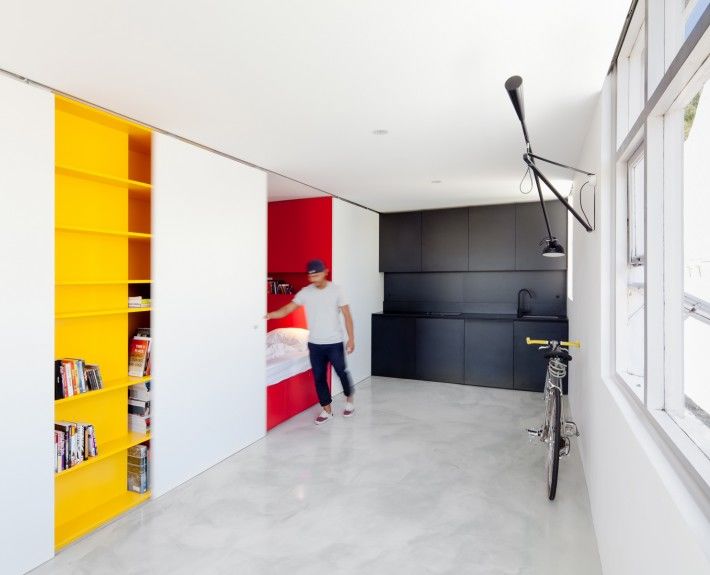 Above: Sliding walls in this studio apartment conceal an entry, bookshelf, bathroom and even a bedroom!.
Above: Sliding walls in this studio apartment conceal an entry, bookshelf, bathroom and even a bedroom!.
Sliding walls can hide away clutter, beds, even whole rooms. They are an efficent and stylish way to divide spaces and, whenn planned well, they can make a small space feel a lot larger, while maintaining flexibility for how you use the space.
2. Don't Dedicate a Whole Room to a Bed

Realistically, most of us sleep at the same time. It's pretty rare for of the family to be dining, while every one else is asleep (apart from the cronic nappers amongst us, of course). So it seems a bit wasteful to dedicate so much space to sleeping - particularly for guest rooms which aren't used full time. Instead, find less orthodox ways to house your guests. A well placed mezzanine, pod or broom cupboard (ok, maybe not) can be the perfect space efficent guest suite. Above: Clare Cousins Architects squeeze one fully functional bedroom into a plywood pod off the living area and another 'cozy' guest sleeping platform in a mezzanine above the entry in this tiny apartment retrofit.
3. Walls of Storage
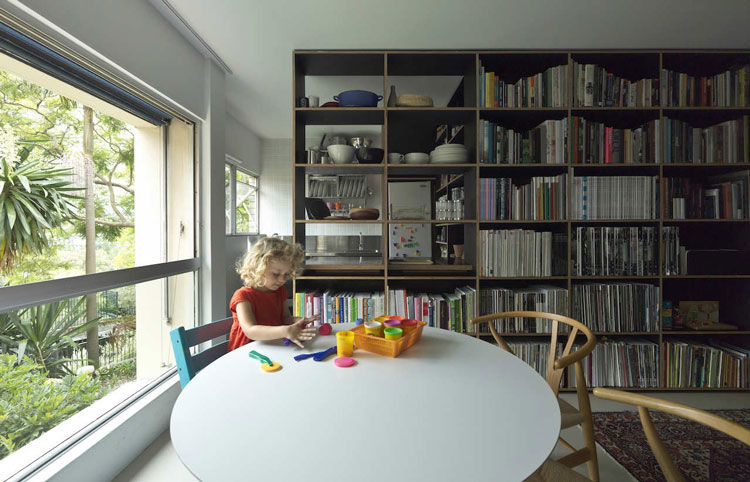 Above: Walls that divide this small apartment from the kitchen and bedroom double as floor to ceiling storage.
Above: Walls that divide this small apartment from the kitchen and bedroom double as floor to ceiling storage.
Forget boring old wall walls, a good wall should do more than just enclose a space, especially when you want to increase the sense of space. Instead, find ways to make walls a storage device as well.
4. Translucent Materials to Let Light In
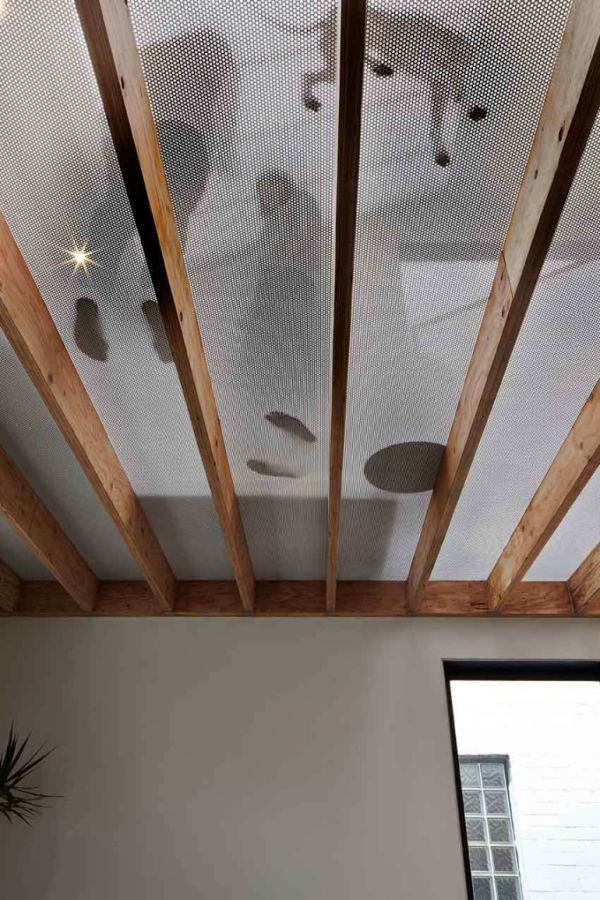
Above: An only slightly terrifying perforated steel lets light filter through to the lower level in this clever home.
Lightbox House has a wealth of ideas to use translucent materials to let light into previously dark spaces. And there's no better way to make a space feel larger (and friendlier) than to introduce new light sources. Even a flurecent light behind a large diffuser can make a windowless room feel more spacious. Or use translucent materials to 'borrow' light from other rooms without sacrificing privacy.
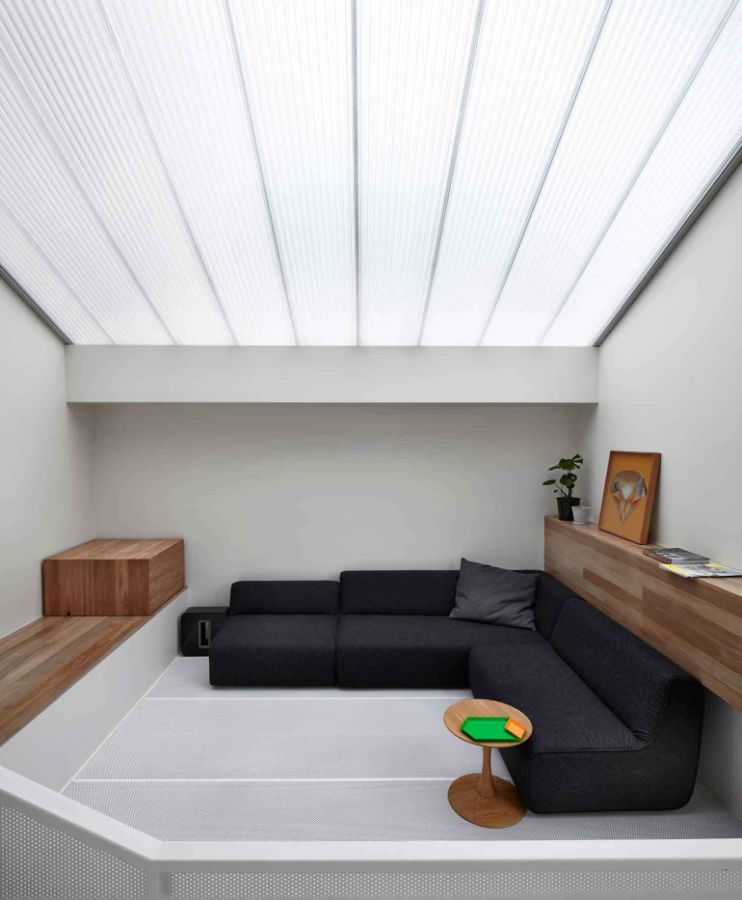 Above: Same house, different (but equally effective) use of translucent materials - a fibreglass roof lets light stream into this living area.
Above: Same house, different (but equally effective) use of translucent materials - a fibreglass roof lets light stream into this living area.
5. Walls that are More Like Windows
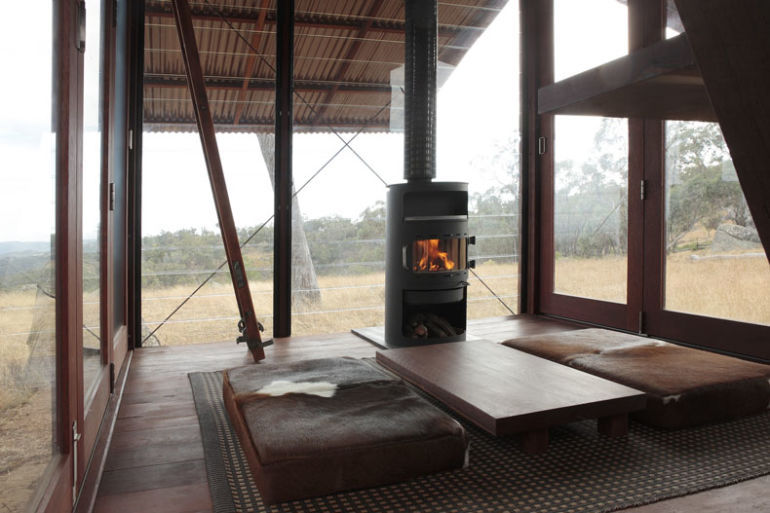 Above: When the corrugated iron awnings are lifted up, the walls at this house seem to disappear thanks to floor to ceiling glass
Above: When the corrugated iron awnings are lifted up, the walls at this house seem to disappear thanks to floor to ceiling glass
Obviously large windows will make a space feel more open by connecting indoors and outdoors. The real trick is to make whole walls feel more like windows. You do that by having floor to ceiling glass. Bonus points for using louvres to the whole wall can open to the outdoors like Casey Brown Architecture have done in this tiny home called Permanent Camping.
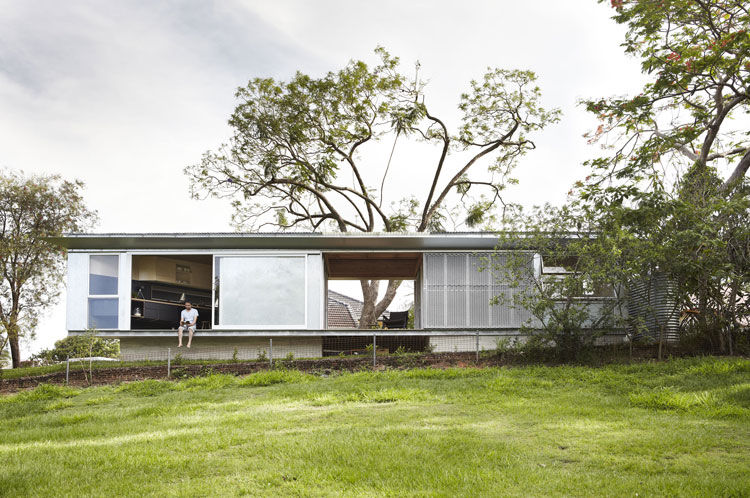 Above: A full height sliding glass door makes the wall disappear at this Queensland home.
Above: A full height sliding glass door makes the wall disappear at this Queensland home.
6. Reflective Surfaces

Above: Reflective surfaces make tiny spaces feel larger. The trick works equally well on four legged people.
We still need to mention that age old trick of reflective surfaces - firstly because it works (like, really well). A reflective surface (or two) will make any space feel larger than it actually is. And two, because not enough people do it! So this is a friendly reminder that any reflective surfaces will trick people into thinking your studio apartment is a four bedroom McMansion. Ok, maybe reflective surfaces aren't that effective - but they're pretty good.
Don't limit yourself to mirrors, either. Brass, copper and even high gloss paint can all work. This brass example by Edwards Moore Architects makes this small home feel simultaneously bigger and warmer.
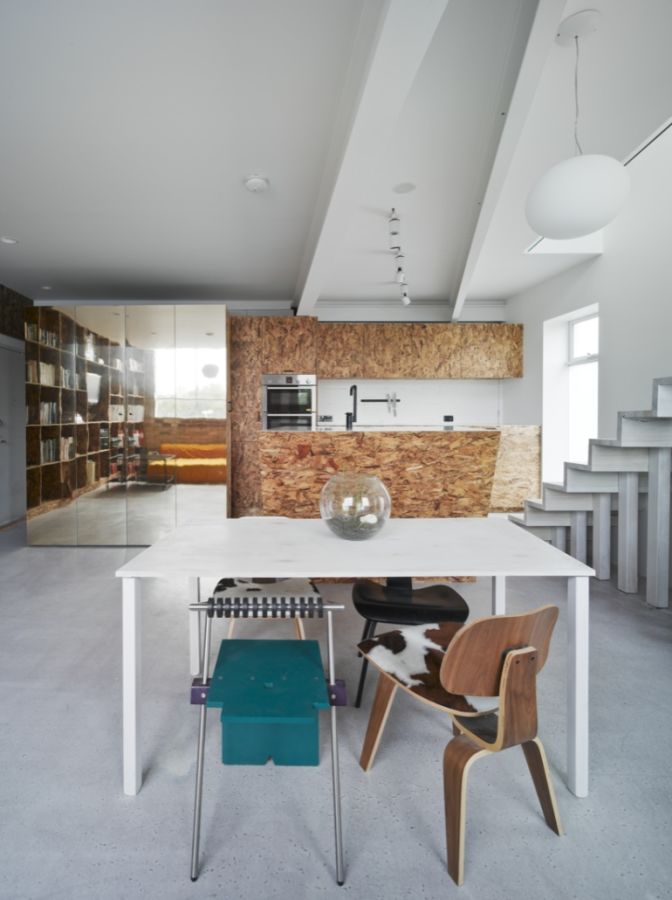
Above: By using a reflective surface with a gold colouring, the look feels less stark and minimal and more warm and homely.
7. Match Walls and Cupboards
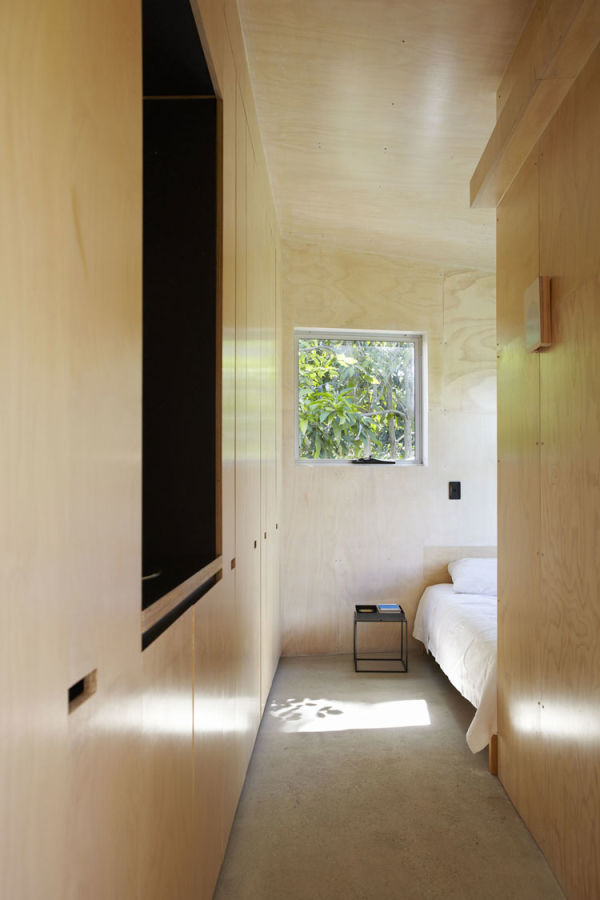
Above: Plywood is a popular and versatile material that can work equally as well as joinery and wall surfaces.
A designer slight of hand is to use the same material for cupboards and walls. This makes the space feel much more harmonious and, consequently, larger. Sure, you could have all white walls and cupboards and then tick number nine off your list. But that's a bit boring, isn't it? Why not use plywood like Atelier Chen Hung have done at Keperra House? Then you get the bonus of a warming natural material to make your space feel more homely.
8. Use a Curtain to Conceal and Divide
 Above: Drawing the curtain transforms this space from a dining room into a bedroom.
Above: Drawing the curtain transforms this space from a dining room into a bedroom.
Curtains aren't just for blocking out your nosey neighbours. This tiny apartment proves that you can use curtains to conceal and divide spaces. Just like Tinder, a simple swipe right of the curtain reveals the bedroom.
A luxurious red velvet curtain at Model House can divide the space so the owners have the option of open-plan or something more intimate. The curtains' thickness serve the additional benefit of being a great acoustic and thermal insulator.
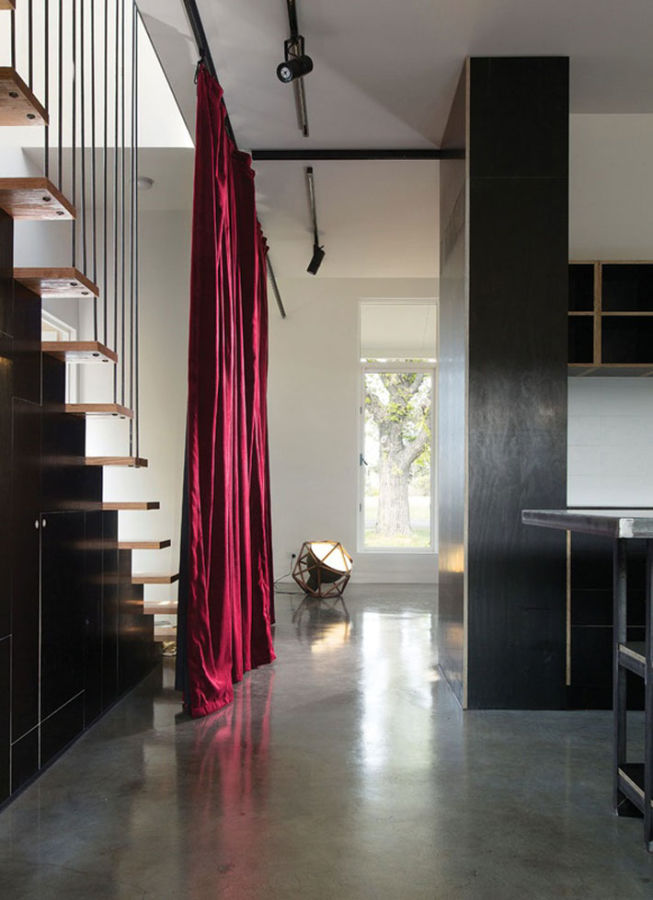 Above: Apart from evoking the drama of the theatre, this curtain has a practical application too.
Above: Apart from evoking the drama of the theatre, this curtain has a practical application too.
About the Author
Brodie Norris writes about one exceptional (and affordable) home every weekday over at Lunchbox Architect.


